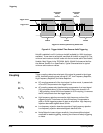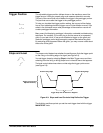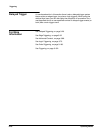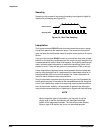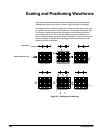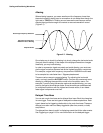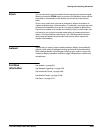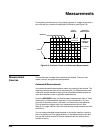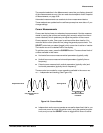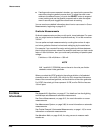
Scaling and Positioning Waveforms
Operating Basics
2Ć24
Aliasing
When aliasing happens, you see a waveform with a frequency lower than
the actual waveform being input or a waveform is not stable even though the
light next to TRIG'D is lit. Aliasing occurs because the oscilloscope cannot
sample the signal fast enough to construct an accurate waveform record
(Figure 2Ć7).
Actual HighĆFrequency Waveform
Apparent LowĆFrequency
Waveform Due to Aliasing
Sampled Points
Figure 2Ć7:ăAliasing
One simple way to check for aliasing is to slowly change the horizontal scale
(time per division setting). If the shape of the displayed waveform changes
drastically, you may have aliasing.
In order to represent a signal accurately and avoid aliasing, you must samĆ
ple the signal more than twice as fast as the highest frequency component.
For example, a signal with frequency components of 500ĂMHz would need
to be sampled at a rate faster than 1 Gigasamples/second.
There are various ways to prevent aliasing. Try adjusting the horizontal
scale, or simply press the AUTOSET button. You can also counteract some
aliasing by changing the acquisition mode in the Acquisition menu. For
example, if you are using the sample mode and suspect aliasing, you may
want to change to the envelope mode. Since the envelope mode searches
for multiple acquisitions with the highest and lowest values, it can detect
faster signal components over time.
Delayed Time Base
You can set a main time base and a delayed time base. Each time base has
its own trigger. There are two types of delayed time base acquisitions. Each
type is based on its triggering relationship to the main time base. These are
delayed runs after main and delay triggerable (after time, events, or both)
acquisitions.
The delayed time base is useful in displaying events that follow other events.
See Triggering on page 2Ć13 for more information on the delayed trigger.



